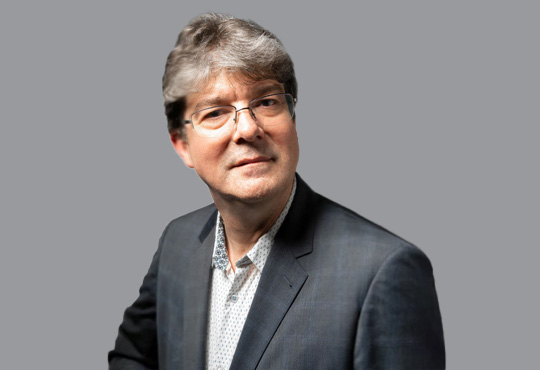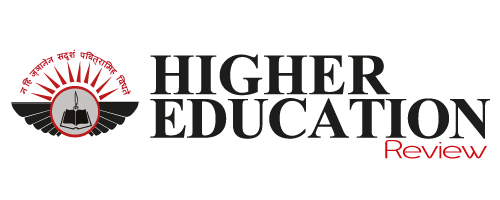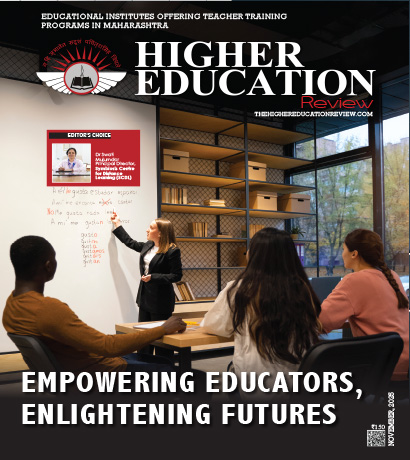Visionary Leadership Skills for Management Professionals
 Jean-François Champagne, Interim Vice-Rector, Human and Organizational Development, UQAM in an interaction with Higher Education Review shed light on how leaders can create a culture where risk-taking and experimentation drive breakthrough results, some of the unconventional habits distinguish transformational leaders from average managers, how can aspiring leaders leverage failure as a tool for personal and organizational growth and more.
Jean-François Champagne, Interim Vice-Rector, Human and Organizational Development, UQAM in an interaction with Higher Education Review shed light on how leaders can create a culture where risk-taking and experimentation drive breakthrough results, some of the unconventional habits distinguish transformational leaders from average managers, how can aspiring leaders leverage failure as a tool for personal and organizational growth and more.
How can leaders create a culture where risk-taking and experimentation drive breakthrough results?
Through the IMPM program, which I have sustained with 30 years of management practice, I have found that leaders foster a culture of risk-taking and experimentation by first articulating and communicating a clear purpose - one that resonates deeply with their teams. I dedicate significant time to clarifying how each team member’s responsibilities align with the broader organizational goals. This helps individuals connect their work to deeper values, encouraging them to take intentional action and innovate.
I have learned that modelling vulnerability and authenticity - including sharing my own challenges and lessons from setbacks cultivates psychological safety. This openness empowers team members to experiment and take risks without fear of blame.
Over the years, I have refined a change management strategy grounded in continuous improvement. The specific methodology - whether Kaizen, LEAN, Toyota, Six Sigma, Agile, or another is less important than the underlying principle: a commitment to ongoing learning and adaptation. By definition, this approach rejects the pursuit of a perfect solution in favour of iterative progress.
This mindset enables us to learn from experience, leverage data, embrace diverse perspectives, and translate ideas into action. By recognizing contributions, promoting flexible collaboration, and celebrating experimentation, I strive to create an environment where innovation is not only accepted but encouraged. Ultimately, aligning purpose, modelling openness, and supporting risk-taking leads to breakthrough results and lasting impact.
What unconventional habits distinguish transformational leaders from average managers?
My experience and research highlight several unconventional habits that distinguish transformational leaders from average managers. By integrating Gosling and Mintzberg’s five managerial mindsets with Sinek’s concept of purpose-driven leadership, I’ve developed an innovative approach that also incorporates continuous improvement principles and the consensus-building strategies of Fisher and Ury.
I consistently define and act upon a clear personal and organizational purpose to inspire others and align actions with shared values. Once this purpose is established, I operationalize it through four of Gosling & Mintzberg’s five mindsets: the reflective, analytical, collaborative, and worldly perspectives.
Rather than avoiding uncertainty, I intentionally introduce what I call “creative chaos” by setting ambitious and at times, ambiguous goals that challenge teams to innovate. This is where the fifth dimension, the action mindset, comes into play. By rewarding contributions, encouraging experimentation, and fostering collaboration, I empower teams to pursue bold objectives with passion and creativity.
I consistently remind the team to be relentless with problems, but compassionate with people. We must challenge issues with rigour and precision while always treating one another with respect, empathy, and dignity. These habits allow me to inspire breakthrough results and drive sustainable change that goes beyond conventional management practices.
How can aspiring leaders leverage failure as a tool for personal and organizational growth?
Through my own journey, I’ve come to see failure as a powerful catalyst for both personal and organizational growth. I approach setbacks not as endpoints, but as springboards for learning and innovation. By openly acknowledging mistakes and exploring their root causes, I help cultivate a culture of psychological safety - one where team members feel empowered to take risks and experiment without fear of blame.
Embracing vulnerability and sharing my own failures builds trust and authenticity within the team. Reflecting on what went wrong, extracting meaningful lessons, and adjusting our strategies in response demonstrates resilience and adaptability. This mindset fuels continuous improvement and helps us avoid “analysis paralysis” - the tendency to overanalyze and delay action in pursuit of perfection.
Storytelling and crucial conversations play a vital role in processing failure. By discussing setbacks openly and collaboratively, we transform individual experiences into shared wisdom. When failure is leveraged as a learning tool, it becomes a driver of innovation, agility, and breakthrough results - turning adversity into a catalyst for lasting progress.
In a world of constant disruption, how do leaders anticipate change before it becomes a crisis?
In a world of constant disruption, I strive to anticipate change before it becomes a crisis by engaging in continuous reflection and regularly revisiting both my personal and organizational purpose. This practice keeps me attuned to emerging trends and early signals of disruption.
That said, it’s not always possible to build momentum for change when the looming crisis isn’t yet visible to others. In my experience, the most impactful transformational change initiatives I’ve led were those where the leader anticipated and prepared for change, but the true catalyst came when others began to recognize the crisis themselves. This collective realization lowers organizational inertia and creates the conditions for leadership to emerge and drive meaningful transformation. Sometimes, the crisis is necessary. I often tell those who already see the need for change: “Be patient. We won’t be able to convince them yet—they’re not hurting enough.”
By cultivating a reflective mindset, I draw lessons from past experiences and remain open to new information - enabling me to recognize patterns and anticipate shifts. I complement this with analytical thinking, blending data and intuition to assess risks and opportunities, and to act decisively - sometimes even allowing a challenge to escalate just enough to trigger awareness and urgency.
I actively seek diverse perspectives by engaging team members, external partners, and broader communities. This openness to dialogue and feedback enhances our ability to detect potential disruptions early. I also foster a culture of experimentation and calculated risk-taking, where learning from small failures is not only accepted but encouraged.
Over time, this approach builds empowerment and autonomy, enabling individuals to contribute more meaningfully and connect their work to a deeper sense of purpose. By modelling adaptability and resilience, I help the organization pivot, quickly transforming potential crises into opportunities for growth and innovation.
What strategies help leaders turn ethical dilemmas into opportunities for innovation and trust-building?
In my experience, ethical dilemmas are not roadblocks – they are opportunities to build trust and spark innovation. I approach them with transparency, open dialogue, and values-driven decision-making. Rather than avoiding difficult conversations, I acknowledge ethical challenges directly and invite diverse perspectives through honest discussion and storytelling. This fosters psychological safety, where team members feel safe to speak up, share concerns, and contribute ideas.
By modelling authenticity and vulnerability - sharing my own struggles and the reasoning behind tough decisions, I build trust and reinforce that ethics is central to our culture. In collaborative environments where knowledge and values flow freely, collective wisdom emerges from shared experience.
I treat ethical dilemmas as catalysts for creative problem-solving, encouraging solutions that align with our core values. By recognizing integrity and celebrating contributions that uphold ethical standards, I reinforce a culture where doing the right thing drives sustainable innovation and long-term success.
How can visionary leaders align individual purpose with organizational vision to achieve exponential impact?
My experience as a practitioner and researcher shows that visionary leaders align individual purpose with organizational vision by helping team members articulate their own “why” - their personal mission and values. Encouraging reflection and self-discovery gives individuals clarity on what drives them and how they aspire to contribute.
I connect these personal purposes to the broader organizational vision, showing how each person’s strengths and motivations fuel collective goals. This alignment is built through open dialogue, storytelling, and collaborative environments where knowledge and values are freely exchanged.
By modelling authenticity and vulnerability, I foster psychological safety and trust, empowering teams to take ownership and pursue ambitious goals with passion. Integrating diverse mindsets - reflective, analytical, collaborative, worldly, and action-oriented - ensures that individual growth is woven into the organization’s evolution.
When personal purpose and organizational vision are in harmony, teams become intrinsically motivated, resilient, and capable of driving innovation and lasting change.

